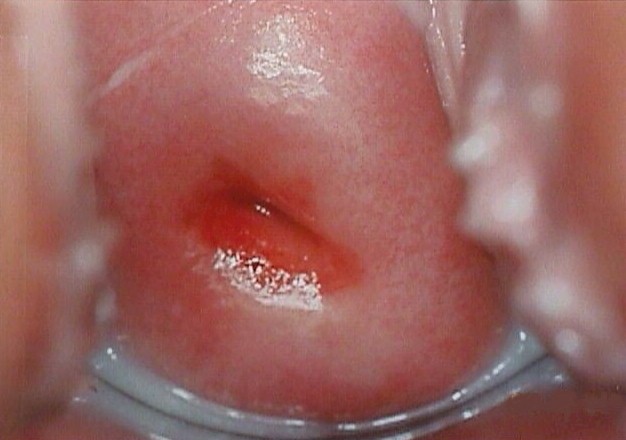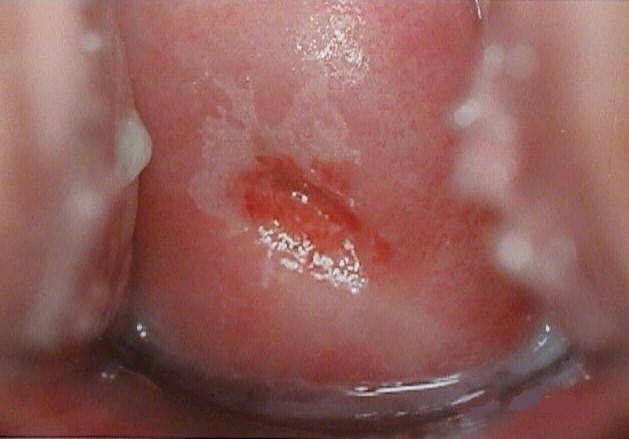|
Dysplasia means that the skin of the cervix is growing faster than it should.
Cervical skin cells are produced at the bottom of the skin (basal layer). As they
reproduce, the daughter cells are pushed up towards the surface of the skin.
Rising
through the skin layer, they mature, becoming flat and pancake-like (as opposed to round
and plump). Their nuclei initially become larger and darker, then
smaller. If these daughter cells reach
the surface of the skin before they are fully mature, a Pap smear will reveal some
immature cells and "dysplasia" is said to exist.
There are degrees of dysplasia: mild, moderate, and severe. None
of this is cancer, but the next step beyond severe dysplasia is invasive
cancer of the cervix. For this reason, any degree of dysplasia is of some concern, but
the more advanced the dysplasia, the greater the concern.
Low grade squamous intraepithelial lesions include:
Some pathologists feel they can distringuish these from each other,
but most feel they are really all the same. Clinically, they are all
considered to the the same. They are mild abnormalities that usually
don't cause serious problems. If left unattended for a very long time, a
few of them will progress, through stages, to become invasive cervical
cancer.
High grade squamous intraepithelial lesions include:
-
HGSIL
-
Moderate Dysplasia
-
Severe Dysplasia
-
Carcinoma in situ
-
CIN 2
-
CIN 3
While many pathologists feel they can distinguish some of these from
each other, their clinical significance is similar. They are all
dangerous problems that, if left unattended, may advance into invasive
cancer.
None of these changes are visible to the unassisted eye
Nor are
there any symptoms of cervical dysplasia. Only through microscopic
evaluation can dysplasia be detected. Using such aids as colposcopy, or
application of acetic acid facilitates the identification of dysplasia.
The reason dysplasia is an important clinical concern is because of
its relationship to cervical cancer.
More than 90% of cervical cancers derive from squamous cells. We
believe that most, if not all of these cancers are preceded by cervical
dysplasia. We further believe that while there is certainly individual
variability, the progression from normal to dysplasia to cancer is a
slowly-moving process, taking on average about 10 years. Intervention at
any time before invasive cancer has occurred is associated with excellent cure rates
and, we believe, usually prevents the development of cancer.
The greatest value of cervical screening
The greatest value of cervical screening, then, is not early detection
of pre-existing cervical squamous cell cancers, but rather through the
prevention of the cancer by early detection of the cancer pre-cursors (dysplasia),
with effective treatment of the dysplasia.
|

Normal Maturation

Normal Pap Smear

Initial normal appearance of mild dysplasia

Mild Dysplasia after application of acetic acid
|